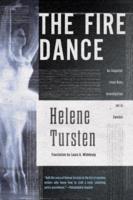A Swedish krimie in a series featuring the insightful Inspector Irene Huss. These are police procedurals of a high order. This is the second Huss novel I have read. Evidence is compiled and interpreted, witnesses are questioned repeatedly, and finally Huss sees something in it. The locale is well realised, as are the manners and morēs of contemporary Sweden in Göteborg, along with the weather.

This story revolves around arson and spans 15 years. Huss makes several mistakes but admits it and continues. She has grit, that is for sure. The Fire Dance of the title is very nicely done and makes sense.
Huss, when not pursing murderers, copes with two teenage daughters who are fast outgrowing her influence. Her husband works as many nights as she does and that makes things difficult, despite the abundant good will of all parties. He is a chef in a restaurant.
That is the molasses, and here is the vinegar.
There are far too many distractions, most of which do not develop either plot or character. There are repeated descriptions of rooms and clothes that contribute zero to the story. Yet in contrast, Angelika, a principal character, is left practically a cartoon figure there to be stupid, vain, and just get in the way, not a human being at all, but an annoying plot device.
In reality police work on many cases at once, true, but in this novel there is a second plot that occupies a quarter of the book and contributes nothing to the main story line. Art must reflect life, yes, but it need not repeat it word-for-word.
If the superfluous description were substantially reduced and the secondary plot truncated to an aside the book would shed 100 pages, and increase the likelihood that a reader will finish it. When an author spends so much space on descriptions and the secondary plot, readers begin to think that they somehow will play into the resolution. That is the contract between krimie writers and krimie readers: If it is there, then it is relevant in the end. Not so here. This contract goes double for procedurals which this title certainly is.
Huss’s home life is well handled but there is just too much of it. The husband’s collapse seems contrived and is wholly irrelevant. Yes, I know, life is like that, but this book is not life, it is art.
Finally, I just did not get the motivation of the villain. It did not register, just voilà, he did it. Why?
I felt very early that Huss jumped to the conclusion without any evidence that the victim had been held prisoner, when, especially given how strange the victim was, she just might have gone off on her own. Of course that is what happened but it seemed like Huss had read the book and knew the future! Equally, the initial description of the victim as icy and remote does not payoff. It is there, it seems significant, it is well written, and, it is irrelevant.

Skip to content
